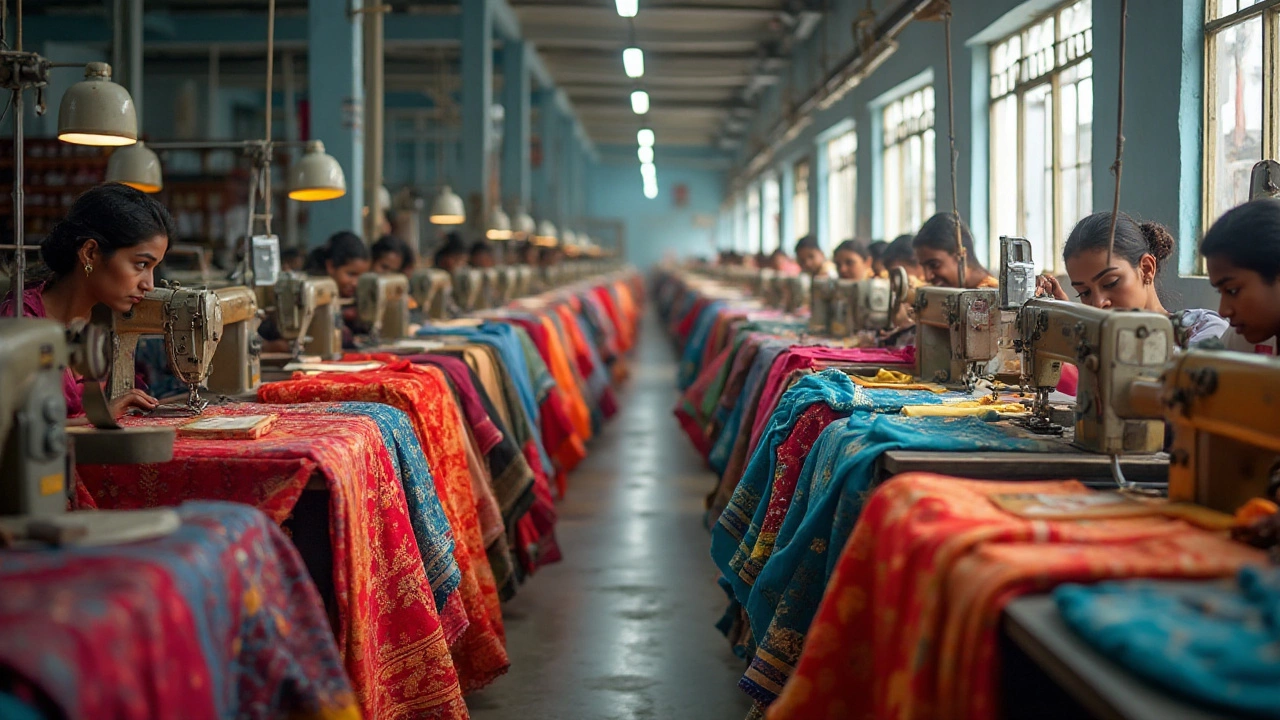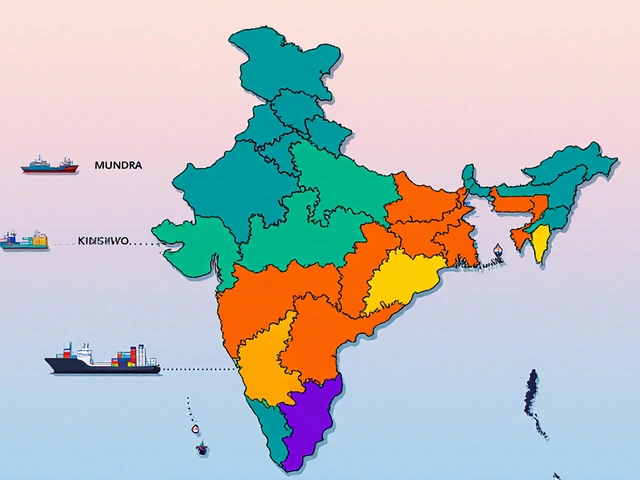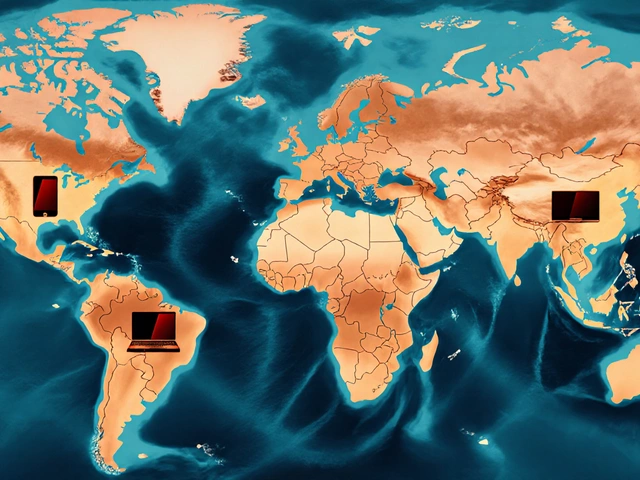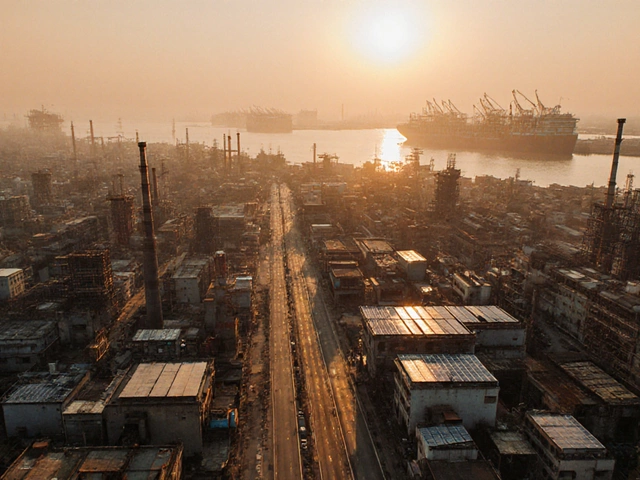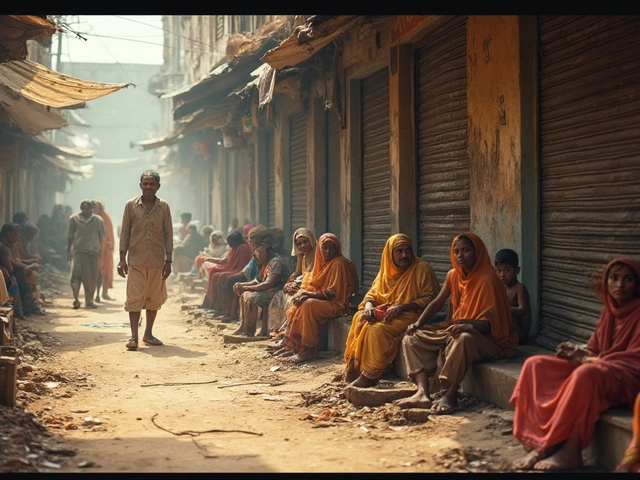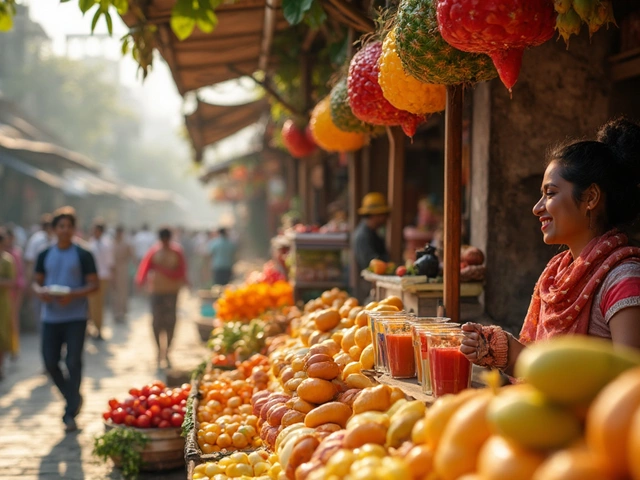The textile industry in India is a significant part of the country's rich heritage and economy. With a history deeply rooted in craftsmanship and innovation, the industry has evolved into a formidable force in the global market. India stands as one of the largest suppliers of garments and textiles worldwide, providing quality apparel that meets the ever-changing demands of international consumers.
This article explores the top garment exporters in India, highlighting the remarkable growth and success of these companies. Whether through innovative designs, sustainable practices, or cutting-edge manufacturing techniques, these exporters have carved out a niche on the global stage. Discover the key players helping to shape the future of fashion and how they're contributing to the advancement of the Indian economy.
- Introduction to India's Garment Export Industry
- Top Exporters in the Indian Market
- Key Strategies for Success
- Impact on Global Fashion Trends
- Sustainability and Innovation
- Future Prospects of India's Garment Exporters
Introduction to India's Garment Export Industry
India's garment export industry is a cornerstone of the country's economy, with deep roots in its historical and cultural landscape. The country has long been a hub for textile cultivation, weaving, dyeing, and embroidery, known for its rich variety of fabrics like cotton, silk, and wool. The industry contributes significantly to India's GDP, providing employment to millions and fostering economic growth across various regions. This expansive sector has flourished due to a blend of traditional craftsmanship and modern innovation, making India a global leader in textile manufacturing.
The journey of India's garment export industry from handloom operations to becoming one of the top suppliers to the world is a story of resilience and adaptation. Over the years, the industry has evolved with the introduction of modern technologies and practices, enabling Indian garment manufacturers to meet diverse consumer needs internationally. Large-scale factories now complement small artisan workshops, creating an industry that caters to both mass market and niche segments of the global fashion landscape. Innovations in sustainable manufacturing, digital design, and smart textiles are pivotal advancements that have propelled Indian exporters to the forefront of the industry.
India's garment exports thrive on a competitive edge built around cost-effectiveness, skilled labor, and versatile supply chain capabilities. The Indian government has also played a supportive role through favorable policies and schemes, such as the Technology Upgradation Fund Scheme (TUFS), which helps integrate advanced machinery and technology to enhance global competitiveness. As a result, the industry has seen remarkable growth in several regions, with states like Tamil Nadu, Maharashtra, and Gujarat leading the pack in garment production and exports.
The industry's global appeal is not just about volume; it's about the distinctive quality and storytelling behind Indian-made garments. Products ranging from everyday apparel to bespoke clothing find favor in fashion capitals like New York, Paris, and Milan. Indian garment exporters like Raymond, Arvind Mills, and Welspun India are driving this momentum, showcasing the country's potential in setting trends on a worldwide scale. According to the Apparel Export Promotion Council (AEPC), India's apparel exports are poised to reach $65 billion by 2025.
The Financial Express once noted, "With the right mix of tradition and modernity, India's garment industry holds the key to everlasting success on the global stage."
As global demand for sustainable and ethically produced clothing rises, India's garment industry is uniquely positioned to capitalize on these trends. Many manufacturers are adopting eco-friendly practices such as using organic fibers, reducing water consumption in dyeing processes, and establishing fair labor practices. This commitment to sustainability not only preserves resources but also appeals to environmentally conscious consumers, offering Indian exporters a significant advantage over competitors who are slower to adapt.
For aspiring entrepreneurs and established businesses, understanding the dynamics of India's garment export industry is crucial. It's a sector brimming with opportunities, fueled by a young workforce, innovative technologies, and a commitment to quality that resonates globally. As India continues to shape the future of fashion, its garment export industry remains a testament to the blend of age-old traditions and cutting-edge technology, leading the nation into new horizons.
Top Exporters in the Indian Market
The Indian garment industry has long been a cornerstone of the country's economy. Boasting a diverse range of high-quality fabrics and skilled artisans, it has become a hub for textile production across the globe. Among the myriad of companies that contribute to this legacy, a few stand out as the top garment exporters in India. These companies have established reputations for reliability, innovation, and quality.
One prominent name leading the charge is Raymond Ltd. Known for its luxurious offerings, Raymond is a stalwart in the Indian textile market with a history spanning over nine decades. The company has built a formidable presence not only within India but also internationally. Its ability to adapt to changing market dynamics, while maintaining a keen eye on sustainability, has allowed it to remain ahead. Raymond’s emphasis on eco-friendly production processes underscores its commitment to a greener future.
In addition, Arvind Limited emerges as another significant player in the textile scene. With a focus on innovation, Arvind has pioneered vertical integration, enabling seamless operations from fabric production to garment manufacturing. This allows Arvind to exercise greater control over quality and cost-effectiveness, a combination that appeals to both domestic and international markets. Its extensive product portfolio ranges from denim to formal wear, reflecting its versatility and market reach. As Arvind continues to push boundaries, it remains a leader in sustainable garment production, aiming to reduce its carbon footprint significantly.
"Arvind Limited is not just a company; it's a philosophy that shapes the future of textiles around sustainability and innovation," notes an industry expert in a recent financial journal.
Another heavyweight in the Indian market is Welspun India, renowned for its home textile products, including towels and sheets. While primarily known for home textiles, Welspun's ability to enter the garment sector with diverse offerings showcases its adaptability and business acumen. The company heavily invests in technology to enhance production efficiency and product quality. Its strategic acquisitions and partnerships have further cemented its status as an influential player on the global stage.
Sector-specific stats from recent years can illustrate this industry prowess. Consider the data: in 2023 alone, the combined export value from top Indian garment enterprises stood at approximately $32 billion, contributing a significant share to the burgeoning economic prosperity. This figure emphasizes the sheer scale and impact of India's textile exporters.
In essence, these companies collectively define the Indian garment industry as a powerhouse of quality, reliability, and innovation. By continuously evolving and focusing on sustainability, they set the standards for others to follow, shaping the course of India's textile market both locally and internationally.

Key Strategies for Success
The triumph of India's leading garment exporters hinges on a delicate blend of tradition and modernity, with each company tailoring its own blueprint for success. By focusing on a mix of quality control, sustainable practices, and market adaptability, these textile manufacturers have carved out a significant presence in the global market. A core strategy that has emerged is the emphasis on technology in manufacturing processes. Automation and state-of-the-art machinery have enabled manufacturers to boost efficiency, reduce costs, and meet the soaring demands from international clients without compromising on quality. This technological edge facilitates not only scaling up production but also in achieving precision and consistency in every stitch and seam.
Sustaining strong relationships with international buyers is another cornerstone of their strategy. By maintaining transparent communication and adapting rapidly to the ever-evolving trends in fashion, Indian garment exporters have nurtured trust and dependability with their overseas partners. A notable aspect is the bespoke service some apparel export leaders provide, designing customized solutions that align with the client's particular needs. Through continuous innovation in design and fabric, they've kept their offerings fresh and appealing, often inspiring trends rather than merely following them.
Innovation is not just limited to design but extends to the adoption of sustainable and eco-friendly practices. Many companies now incorporate organic materials and endorse ethical business practices, which resonate well with the environmentally conscious consumers of today. Such initiatives not only improve their corporate image but also open up new market segments that value sustainability. A recent report indicates that Indian garment exporters who have integrated green technology into their operations have seen a marked rise in sales, particularly in markets such as Europe and North America, where eco-friendly apparel is in high demand. To illustrate this, consider that the use of recycled fibers in production processes has increased by 25% over the past two years, reflecting a growing commitment to environmental concerns.
Investment in Workforce
At the heart of these strategies is a skilled and adaptable workforce. Recognizing that human capital remains a vital asset, leading companies invest significantly in training programs to enhance skills and introduce workers to the latest production technologies. This approach not only improves the quality of the output but also boosts morale and job satisfaction among workers. With a strong emphasis on upskilling, the industry has seen a rise in productivity and employee retention, critical factors in maintaining competitive advantage.
To sum up, the symbiotic relationship between cutting-edge technology, sustainable practices, and skilled manpower is where India's garment exporters find their winning formula. By continuously aligning these strategies with the dynamic demands of the market, they've managed to keep pace with international competitors while preserving a uniquely Indian touch. This multifaceted approach ensures the continuous growth and prominence of Indian garment exporters on the world stage, reinforcing their status as key players in the global Indian garment industry.
Impact on Global Fashion Trends
India's influence on global fashion trends extends far beyond its borders. The country's garment exporters have become key players in shaping international styles with their rich history of textile production and innovative approaches. Embodying a blend of traditional craftsmanship and contemporary designs, Indian textiles have made a significant footprint on runways and retail stores worldwide. As demand grows for sustainable and ethical fashion choices, India's garment exporters have risen to the occasion by implementing eco-friendly practices and championing the art of handcraftsmanship. This shift not only caters to the conscious consumers but also boosts India's reputation as a leader in sustainable fashion.
One notable trend is the resurgence of traditional Indian fabrics and motifs in the global fashion scene, attracting designers from Paris to New York. International designers frequently incorporate fabrics like khadi and ikat into their collections, showcasing their versatility and aesthetic appeal. Beyond traditional attire, India has also mastered the art of creating innovative blends, resulting in exquisite garments that appeal to a diverse customer base. The adaptability of Indian designs provides an endless source of inspiration, driving a growing interest in collaborations between Indian brands and foreign designers.
An essential element in this global influence is the strategic partnerships between Indian textile manufacturers and international brands. By offering high-quality products at competitive prices, Indian garment companies have positioned themselves as prime suppliers to major retail outlets worldwide. Such collaborations highlight India's capability to maintain consistency in quality, while also pushing the boundaries of design and functionality. As a result, many Indian companies have expanded their influence by opening flagship stores and gaining recognition on international platforms. Experts within the industry point out that India’s unparalleled craftsmanship and commitment to quality set it apart as a valuable player in the ever-evolving fashion landscape.
According to a recent report by Fashion Network, the global demand for Indian apparel increased by 15% in the past year alone. Interestingly, this growth spurt aligns with an increasing preference among conscious consumers who actively seek products that offer a cultural story along with vibrant aesthetics. Commenting on this trend, industry veteran Ritu Kumar stated,
"Indian textiles have a narrative woven into their fibers, a story that resonates globally amidst vast, anonymous industrial production."This rising appreciation for authentic and storied garments amplifies the need for Indian manufacturers to continue innovating while respecting their deeply ingrained traditions. As the fashion world continues to evolve, India's role as a trendsetter is reinforced as it crafts the future of global apparel with creativity and consciousness.

Sustainability and Innovation
In the dynamic landscape of the Indian garment industry, sustainability and innovation are not mere buzzwords; they are seen as crucial pillars that determine the long-term success and market relevance of companies. Garment exporters in India have been leading the charge with remarkable strides in these areas, adapting to global demands for more ethical and eco-friendly products. Many of these exporters are integrating sustainable practices into their production processes, from using organic fibers to investing in water-efficient dyeing techniques.
A notable trend among these exporters is the focus on using biodegradable and recycled materials. This shift is driven by consumer preferences as buyers around the world increasingly support brands that align with their environmental values. The industry is seeing a surge in use of innovative fabrics made from unexpected sources like bamboo fibers and recycled polyester. Innovators are continually experimenting with materials that reduce landfill waste and lower the carbon footprint during production. Additionally, there's a significant move towards digital textile printing, which minimizes waste and uses less power compared to traditional methods.
Some companies are also making headway through technological advancements and smart manufacturing techniques. These innovations not only improve efficiency but also allow for responsive supply chain management, resulting in reduced waste. Technologies like 3D knitting and AI-driven design tools are becoming popular as they offer customization options while saving resources. As B.K. Goenka, Chairman of Welspun Group, mentions in a recent interview, "Innovation in textiles is as critical as in IT. The future lies in intelligent fabrics and advanced manufacturing that decrease environmental impact."
Investment in energy efficiency is yet another hallmark of the sustainable efforts within the sector. Several companies are embracing renewable energy solutions, installing solar panels and wind turbines to power their factories. This transition not only saves energy costs but also significantly cuts down on greenhouse gas emissions. Moreover, advanced water reclamation systems are being implemented to reduce water usage, an essential step in a country where water scarcity is an ever-present challenge.
Indian garment exporters are also recognizing the importance of transparency and traceability in their operations. Many leading firms have started adopting blockchain technologies to ensure a traceable supply chain. This guarantees that every step of the production process aligns with ethical and sustainable standards, enabling consumers to make informed purchasing decisions. This transparency builds trust and enhances the brand reputation in international markets.
Moreover, sustainability is driving innovation when it comes to packaging. Exporters are developing alternatives to traditional plastic packaging. Compostable and biodegradable materials for packaging are being preferred. This shift is not just beneficial for the environment but also adds a premium feel to the product, enhancing customer satisfaction.
Overall, the role of sustainability and innovation in India's garment exporting industry extends beyond environmental benefits. By embracing these practices, companies are setting new benchmarks in the global fashion trends and reaping economic rewards. The future looks promising as more businesses commit to a sustainable path, delivering products that not only appeal to the modern consumer but also contribute positively to the planet.
Future Prospects of India's Garment Exporters
India's garment exporters are at a pivotal moment of transition, one that could reshape their trajectory for decades to come. As technology and consumer preferences rapidly evolve, Indian textile manufacturers find themselves on the brink of a transformation that promises both opportunity and challenge. The current era is marked by advancements in eco-friendly production methods, digital integration, and the rise of ethical fashion. Many companies are now investing heavily in technologies like artificial intelligence and automation to stay competitive and meet global standards. The marriage of traditional techniques with modern technology creates a fertile ground for innovation, potentially giving Indian garment exporters a substantial edge in the international market.
Consumer awareness is at an all-time high, and brands are under pressure to adhere to sustainable practices. This shift in consumer behavior is leading many Indian exporters to adopt green technologies and eco-conscious sourcing of raw materials. With governments around the world imposing stricter environmental regulations, adapting to these changes not only opens up new market avenues but is increasingly becoming a necessity. A report from Everlane, a reputable source in the fashion industry, states, "Sustainability is no longer a trend but a must-have approach for any brand seeking longevity." The foresight to embrace these changes now could significantly boost the reputation and competitiveness of India's garment industry on a global scale.
Beyond sustainability and technology, geopolitical scenarios also play a crucial role in shaping the future prospects of India's garment exporters. Trade agreements, diplomatic relations, and global economic conditions can either unlock or constrain market potential. Recent shifts, such as changing trade dynamics due to geopolitical tensions, present both risks and opportunities. Navigating these waters requires agility and foresight, a combination that many leading Indian exporters are diligently cultivating. A strategic diversification of markets can help mitigate risks associated with volatile trade policies and ensure steady growth.
Alongside these macroeconomic factors, the emphasis on indigenous crafts and local artisans continues to rise. Many Indian companies are placing a renewed focus on traditional artistry, which has historically set the Indian textile industry apart. By promoting indigenous textiles, exporters not only showcase the country's rich cultural heritage but also tap into a unique selling proposition that appeals to ethically conscious consumers. Combining this traditional know-how with modern interventions like e-commerce platforms will be crucial in expanding market reach.
Looking ahead, collaborative efforts among industry leaders, policymakers, and tech innovators will shape the future landscape of the Indian garment industry. Joint efforts to create a supportive infrastructure, ease of doing business, and investment in skill development are critical for sustainable growth. Training local talent to use advanced technologies and maintaining quality standards will ensure that Indian garment exporters remain formidable players. By adapting to trends and addressing hurdles head-on, India's garment exporters are poised for sustained success, securing their place as pivotal contributors to the global apparel market.
